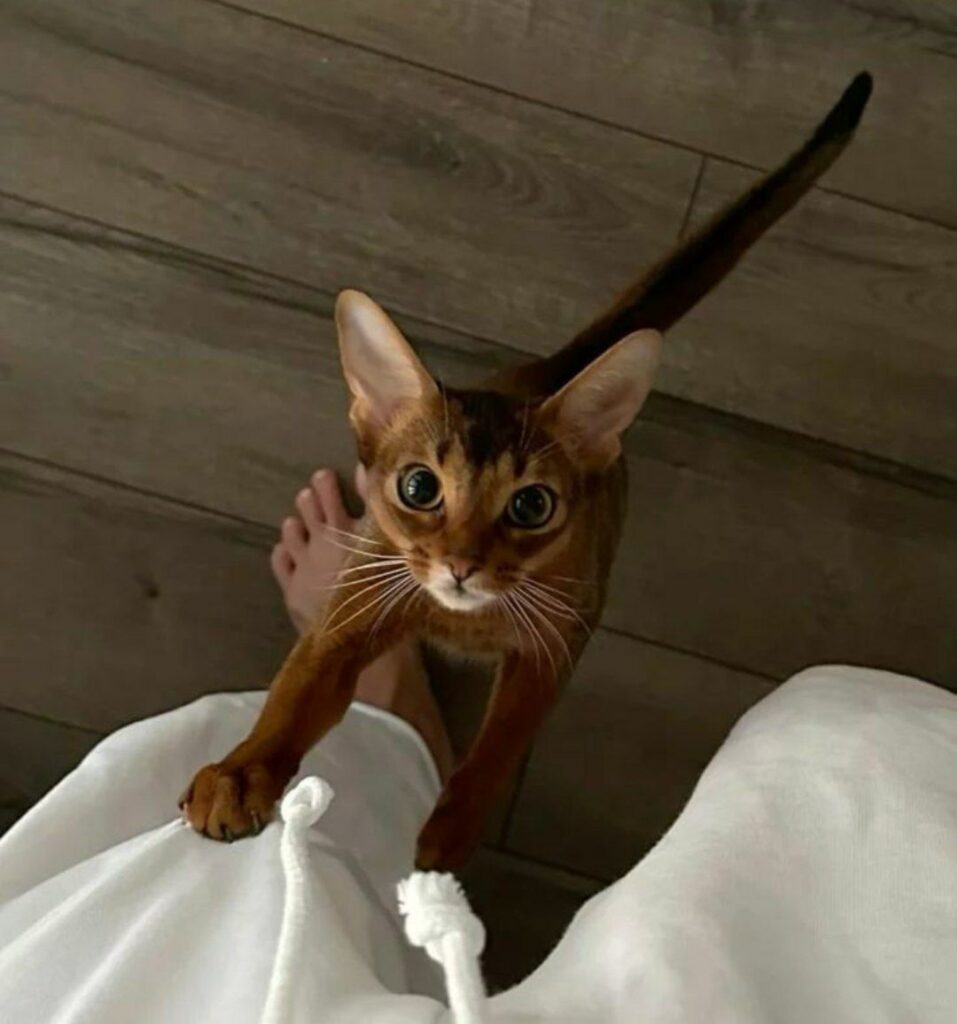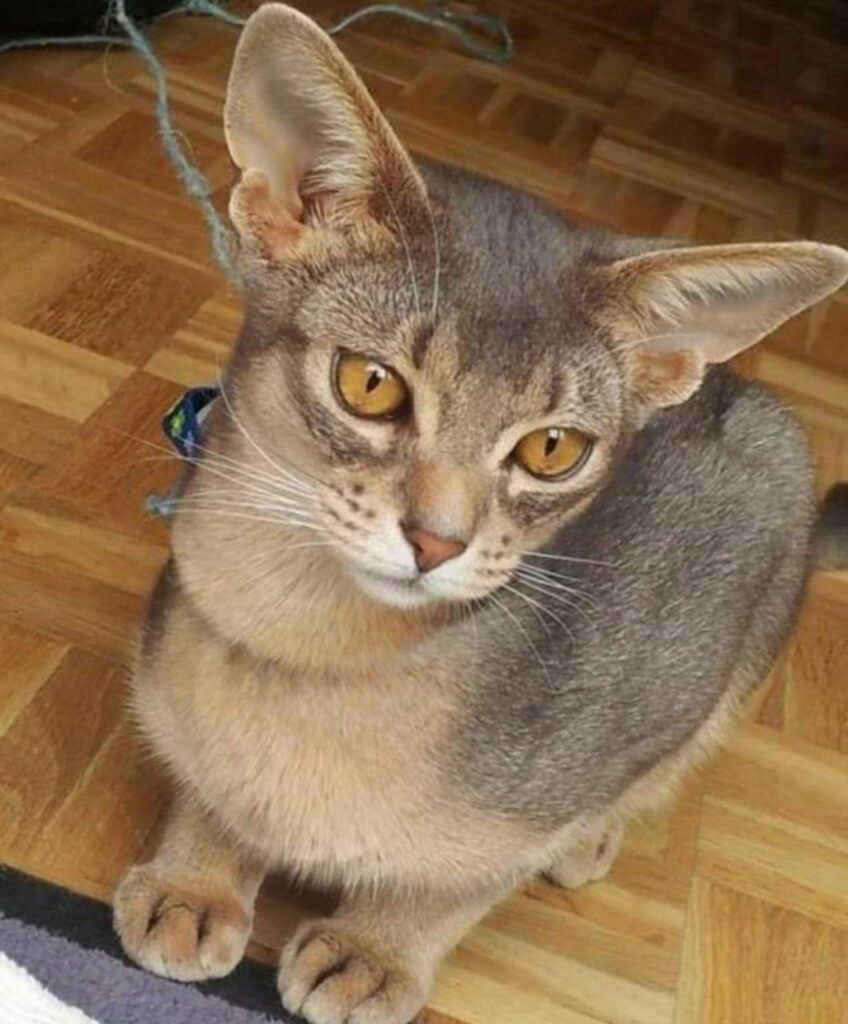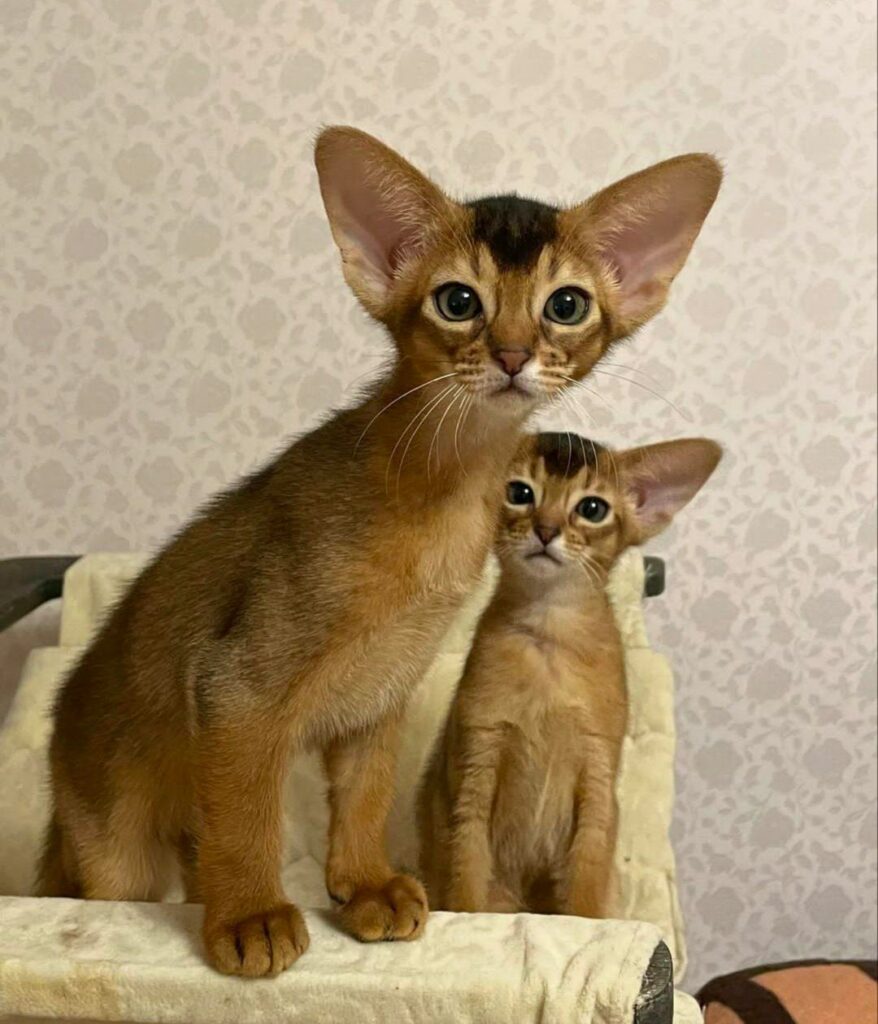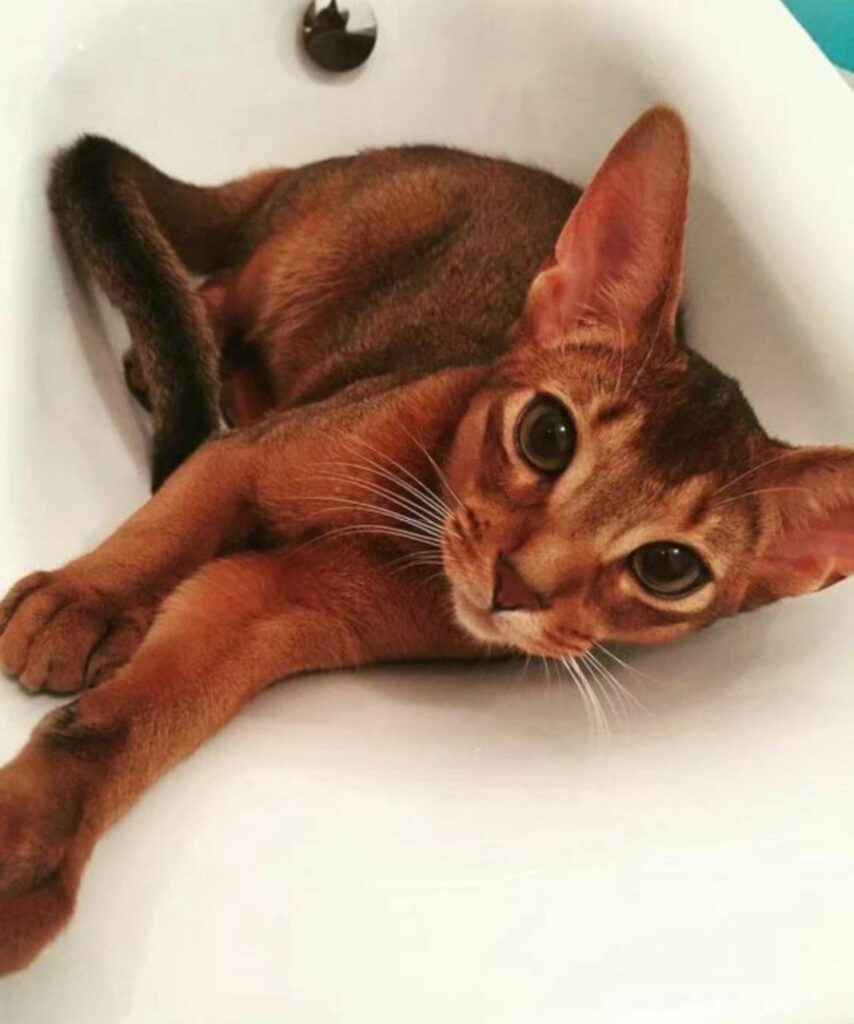Abyssinian Cats
The Abyssinian: A Sunbeam Wrapped in Mystery
The Abyssinian cat, with its mesmerizing almond eyes, ticked tabby coat, and athletic grace, embodies the essence of an ancient feline spirit. Often nicknamed “Abys” for short, these captivating creatures hold a place of intrigue in the cat fancy. Delving into the history, characteristics, care requirements, and fascinating facts surrounding the Abyssinian reveals a breed steeped in legend and brimming with personality.

A Storied Past: Unveiling the Abyssinian’s Origins
Unlike many pedigreed cat breeds with meticulously documented histories, the Abyssinian’s origins are shrouded in delightful ambiguity. Local legends abound, offering colorful explanations for their distinctive ticked tabby coat and athletic prowess. One popular tale suggests they are descended from cats worshipped in ancient Egypt, perhaps even the sacred temple cats revered for their association with the goddess Bastet.
Another story suggests they originated in Abyssinia (present-day Ethiopia), brought to Europe by British soldiers returning from military campaigns. While the exact origin story remains a mystery, historical evidence suggests the Abyssinian’s roots lie somewhere along the trade routes of the Indian Ocean and Southeast Asia. These early cats likely shared ancestry with other naturally occurring ticked tabby breeds found in these regions.
By the late 19th century, Abyssinian cats had begun to appear in cat shows across Europe. Their distinctive appearance and lively personalities quickly captured the hearts of cat fanciers. Selective breeding programs in England in the early 20th century solidified the Abyssinian’s unique characteristics, leading to their recognition by major cat associations. Today, the Abyssinian remains a popular breed globally, admired for its athleticism, playful spirit, and captivating appearance.

A Coat of Mystery: The Abyssinian’s Distinctive Markings
The defining characteristic of the Abyssinian is undoubtedly their mesmerizing ticked tabby coat. This unique pattern features individual hairs banded with alternating colors, creating a shimmering, iridescent effect. The Abyssinian standard recognizes four official colors: ruddy (warm brown), red, blue (a cool grey), and fawn (a rare, apricot-beige). These base colors are then accentuated by the ticking, adding depth and complexity to their coats.
Beyond their captivating coat, Abyssinians are known for their medium-sized, muscular builds. They are athletic and agile, with long, slender legs and a graceful gait. Their heads are a modified wedge shape, with large, expressive almond-shaped eyes that can be green, gold, hazel, or even copper. Their prominent cheekbones and large, pointed ears add to their alert and intelligent expression.
The Abyssinian’s overall appearance is one of elegance and athleticism. They move with a sense of purpose, their every step radiating energy and grace. Their captivating eyes and vibrant personalities further enhance their allure, making them truly captivating felines.
A Heart of Gold in an Agile Body: The Abyssinian’s Personality
The Abyssinian’s temperament is as captivating as its appearance. They are renowned for their intelligence, playfulness, and unwavering loyalty to their humans. Unlike some independent cat breeds, Abyssinians thrive on human companionship and require regular interaction. Their intelligence allows them to be trained with positive reinforcement, and they can even learn tricks like fetching or walking on a leash (with proper harness training).
Their playful spirit often extends well into adulthood, making them delightful companions for those seeking an energetic and interactive feline friend. Abyssinians enjoy games that challenge their minds and bodies, such as chasing feather toys, climbing cat trees, or engaging in interactive play sessions. Their curiosity and adventurous spirit are a hallmark of their personality, and they often explore their surroundings with a sense of playful wonder.
However, their intelligence and energy level can sometimes lead to mischief if they become bored. Providing them with enrichment activities like puzzle feeders or rotating toys can help keep them mentally stimulated and prevent destructive behaviors. Abyssinians are generally not recommended for homes with very young children who may not understand their delicate nature and need for gentle interaction.


Living with an Abyssinian:
Here are some additional things to consider when living with an Abyssinian cat:
Providing Enrichment: Their intelligence and playful nature require mental stimulation. Interactive toys, puzzle feeders, and climbing structures can help keep them engaged and prevent boredom. Consider clicker training to strengthen your bond and provide them with a fun mental challenge.
Accommodating their Athleticism: Abyssinians love to climb and jump. Providing them with tall cat trees, scratching posts, and shelves allows them to exercise their agility and explore their vertical world.
Building a Bond Through Play: Regular playtime is crucial for Abyssinians. Engage them in games that challenge their bodies and minds, fostering a strong bond and providing them with an outlet for their energy
Diet: Abyssinians are active cats with high metabolisms. A high-quality cat food formulated for active breeds is essential to provide them with the energy they need. Look for formulas rich in protein and essential nutrients to support their growth and overall health. Regular feeding schedules and monitoring their weight are also important for maintaining optimal health.
Veterinary Care: Regular veterinary checkups are essential for all cats, including Abyssinians. These checkups can help detect potential health issues early on and ensure your feline friend receives the preventive care they need. While generally healthy, Abyssinians can be prone to certain conditions, such as:
Progressive Retinal Atrophy (PRA): This is a group of inherited eye diseases that can lead to vision loss. Regular veterinary checkups and genetic testing can help identify potential risks.
Patellar Luxation: This is a condition where the kneecap dislocates from its normal position. While not always debilitating, it can cause discomfort and requires veterinary attention.
Amyloidosis: This is a condition where abnormal proteins are deposited in organs, potentially affecting their function. Regular checkups and early detection are crucial for managing this condition.
Providing a Loving Environment: Abyssinians crave companionship and interaction. Dedicate time for playtime, gentle cuddles (on their terms!), and positive reinforcement training to strengthen your bond with your feline friend. Their intelligence allows them to learn tricks and enjoy interactive games, making them engaging companions.
Beyond the Shimmering Coat: Fascinating Facts about Abyssinian Cats
The “Ticked Tabby” Mystery: The exact genetic mechanism behind the Abyssinian’s unique ticked tabby coat remains somewhat of a mystery. It is believed to be a polygenic trait, meaning multiple genes contribute to its expression.
The Social Butterfly of the Cat Fancy: Abyssinians are known for their social nature and often thrive in multi-cat households. Their playful spirit makes them excellent companions for other active feline friends. However, proper introductions and socialization are crucial for harmonious cohabitation.
Ancient Egyptian Inspiration: The Abyssinian’s resemblance to cats depicted in ancient Egyptian artwork has fueled speculation about their potential lineage. While their exact origins remain unclear, their captivating appearance undoubtedly evokes a sense of mystery and intrigue.

From Show Cats to Supermodels: Abyssinians have graced the world of cat shows for over a century, captivating judges with their elegance and athleticism. Their photogenic appearance has also landed them in various media campaigns, further solidifying their place in popular culture.
A Breed on the Rise: The Abyssinian’s popularity has remained relatively steady over the years. Their intelligence, playful personalities, and captivating appearance continue to attract cat lovers seeking an active and engaging feline companion.
Owning an Abyssinian cat is a truly rewarding experience. Their captivating appearance, playful personalities, and unwavering loyalty make them ideal companions for those seeking an energetic and interactive feline friend. By understanding their specific needs, providing proper care, and offering them a stimulating environment, you can ensure your Abyssinian thrives and brings joy to your life for many years to come. Whether you seek a loyal playmate for interactive sessions or a curious companion for exploring your home, the Abyssinian offers a unique blend of athleticism, intelligence, and a heart brimming with adventurous spirit.
Essential Items For Your New Kitten
Facebook Twitter Pinterest LinkedIn Essential Items For Your New Kitten Welcoming Your Feline Friend: A Comprehensive Kitten Checklist Bringing home a kitten is an exciting
The Basics Of Kitten Grooming
Facebook Twitter Pinterest LinkedIn The Basics Of Kitten Grooming The Essential Guide to Kitten Grooming: Keeping Your Feline Friend Flawless Welcoming a kitten into your
Understanding Your Kitten’s Behavior
Facebook Twitter Pinterest LinkedIn Understanding Your Kitten’s Behavior Kittens, despite their lack of spoken language, are expressive creatures. By understanding their body language, vocalizations, and


